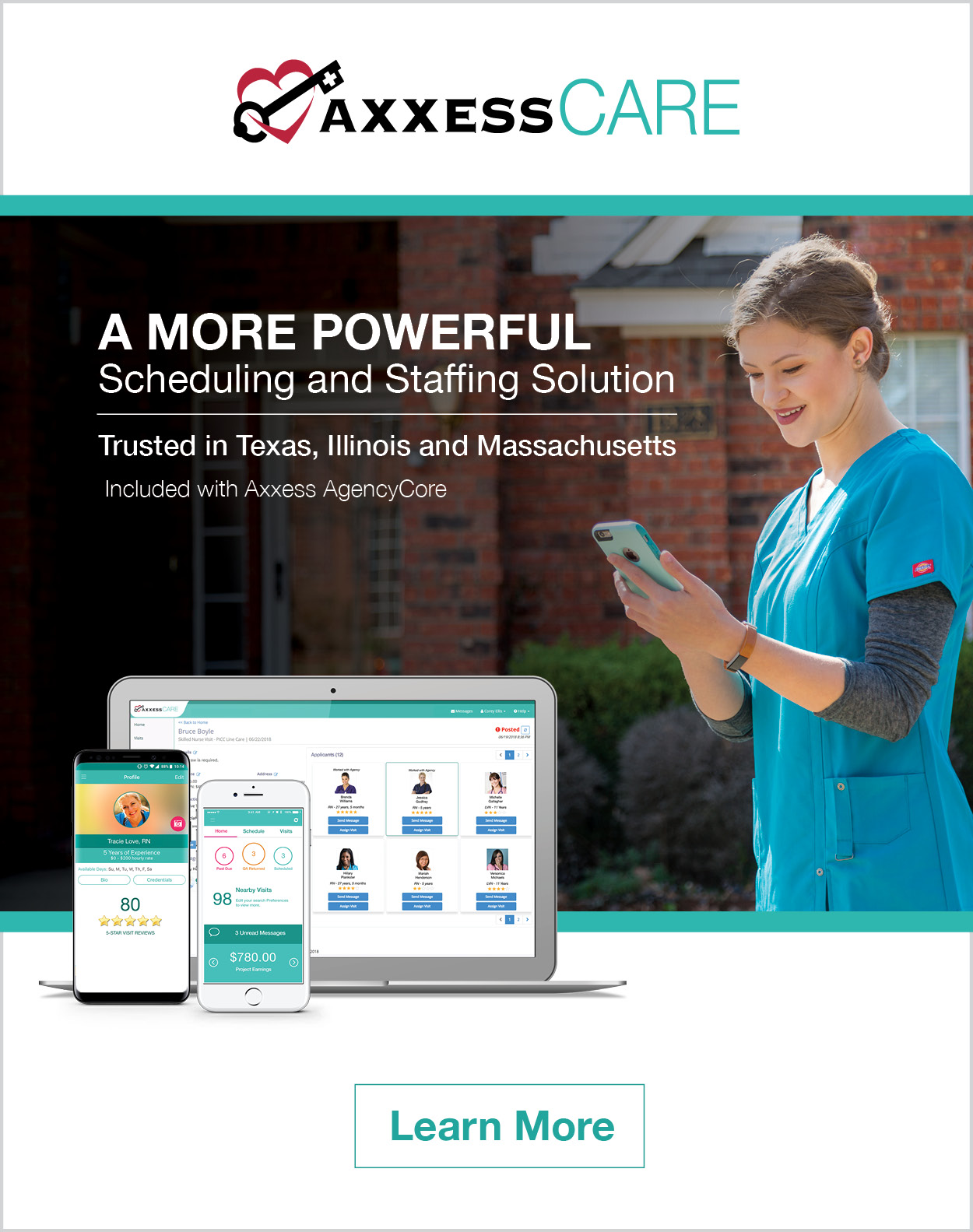
CMS has announced final details related to the Review Choice Demonstration (RCD). The demonstration will begin in Illinois on June 1, 2019. Home health agencies in Illinois should access the Palmetto GBA eServices portal between April 17 and May 16, 2019, to select one of three options: pre-claim review, postpayment review, or minimal postpayment review with a 25 percent payment reduction. Axxess outlined each of the three RCD options in December 2018.
Continuing industry changes present new opportunities for home health organizations to evaluate day-to-day operations. It can be challenging to provide the best possible care while trying to adapt to the Patient-Driven Groupings Model (PDGM), Value-Based Purchasing (VBP), and now RCD. Dividing the processes of RCD into manageable pieces makes the adjustment easier. To maintain compliance and revenue consistency, agencies should analyze current staffing, documentation and billing operations, and adjust processes strategically.
Develop an Approach
Since Medicare has not defined requirements for RCD staff members who submit documentation, agencies can choose a submission process that accommodates regulatory changes and fits seamlessly into current agency processes. Here are some scenarios:
- Clinical staff currently handling an agency’s additional documentation request (ADR) submissions can tweak their existing processes to include all claims in ADR submissions
- Clinical staff not currently involved in claims submission can be allocated to assume submission processes under RCD (i.e., gathering the appropriate documents and submitting pre-claim review requests)
- Billing staff can be designated to assume submission processes under RCD (i.e., gathering the appropriate documents and submitting pre-claim review requests)
- Agencies can hire new staff dedicated to completing RCD submission processes
Agencies should analyze the strengths and weaknesses of their current clinical and billing operations when establishing an ideal process for RCD submissions.
Define Documentation Components
A signed plan of care and documentation that meets the face-to-face encounter requirements are key components of RCD documentation. Agencies are also required to provide documentation indicating homebound status. To fulfill this requirement seamlessly, Axxess systems prompt users to provide documentation that proves homebound status when completing a plan of care. Additional documentation, such as therapy evaluations or agency-specific documents, should be reviewed by agencies to determine when and if they are used for RCD submission. Once all agency staff understand which documents will be used for submission, RCD submitters will know exactly what to submit and which steps to take to retrieve missing documentation.
Review Results/Resubmissions
Once the initial submission is completed, the results will be available in 10 business days. Results for resubmissions will be available in 20 business days. This delay can present a potential cash flow issue if resubmissions are not handled appropriately. To streamline operations, RCD submitters should know the answer to each of the following questions, as they apply to your agency:
- Do agency processes require automatic resubmission of all non-affirmed claims?
- What additional information is provided when requests are partially affirmed?
- How many resubmissions are acceptable? Will this be handled on a case-by-case basis?
Develop a decision tree that answers each of these questions for RCD submitters to reference.
Understand Billing Scenarios
Make sure your organization’s biller understands when the Unique Tracking Number (UTN) is required and where to look for it on paper and electronic claims. Knowing when and how the RCD rule applies is critical to billing. LUPAs, for example, should not be held in anticipation of a UTN since they are not required. Some other key questions specific to a home health agency include:
- How will the agency proceed when Medicare is the primary payer and another insurance is secondary, but the service provided does not fall under the Medicare benefit?
- How will the agency proceed when Medicare is the secondary payer and another insurance is primary?
Billers should understand the ramifications of specific options and be able to communicate them to agency management. In cases where management has determined exactly how Medicare primary/secondary payer scenarios should be handled, the process should be communicated to billing staff and documented for future reference.
Communicate with Patients
Beneficiaries will receive documentation when services are affirmed, non-affirmed, or partially affirmed. Agencies should preemptively discuss Medicare communication with patients and review the steps being taken to ensure patients receive all the services to which they are entitled. A proactive approach regarding patient communication will instill confidence in your organization. Patients can feel secure in knowing that your agency has a plan to handle industry requirements in a way that provides optimal patient care.
Changes will continue to impact the home health industry. Providers who take a collaborative approach to RCD by defining the roles for billing, clinical and new staff members, will position themselves for success. Additionally, an agency with well-established roles can communicate them effectively to patients and deliver an optimal patient experience.
For additional information on the Review Choice Demonstration, refer to the RCD Home Health Operational Guide provided by CMS.
Axxess will continue to support your organization throughout industry changes, with solutions and education to help you streamline operations, grow revenue, ensure compliance and improve patient outcomes.

